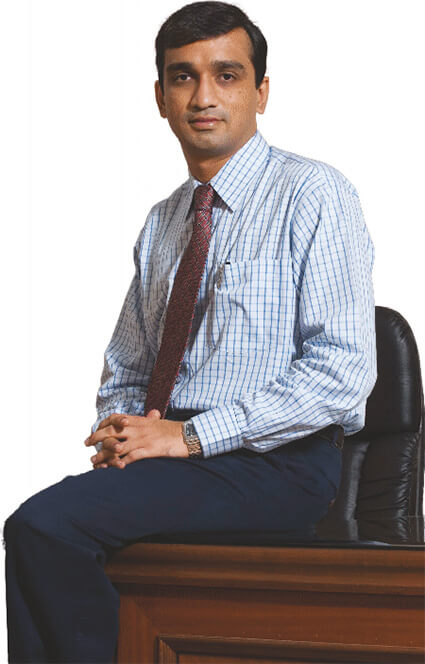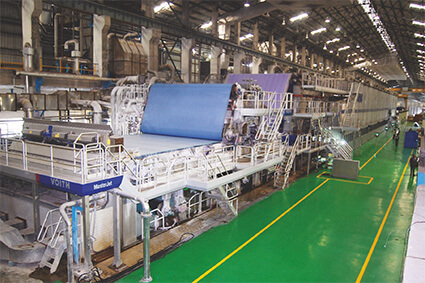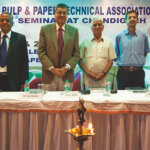In 2009 The West Coast Paper Mills Ltd. (WCPM) did an expansion worth over Rs. 1400 crore which was the single largest brownfield project till date in the Indian paper industry. During that period Mr. S K Bangur, Chairman, WCPM gave us the brief outline about the project. Now in mid of 2012 we interacted with Mr. Saurabh Bangur, Vice Chairman, WCPM to take an outlook on the project, what benefits have been reaped by investing heavily into high-end technology and what are the complexities faced by WCPM during the project execution.
.

The West Coast Paper Mills Ltd.
Paper Mart: WCPM made a major investment in recent years in Indian paper industry with an approach to install a world-class manufacturing unit to produce top class quality product. How have been the recent years for you?
Saurabh Bangur: Yes, WCPM did go in for one of the largest brownfield expansion in the Indian paper industry in a single location with the objective of creating a world-class technology in paper manufacturing in the country. It’s now been practically two years since we started commissioning one section after another; and by Q3 FY 2011 all our equipment were on stream. If I look at recent times after commissioning, it has been very challenging period for us. As this industry entails huge capital investment we had the presume of huge debt in our books and repayment of that in years to come. Fortunately because of advance technology in equipment selection we have been able to produce superior quality of our end product, which was widely accepted in the market.
.
PM: Giving the highlight on the post investment review what benefits does WCPM have reaped during these years and will reap in the coming years by investing in such high-end technology?
SB: Our project capex was huge (Rs. 1400 Crore) and that was mainly because we went in for best technology and all brand new equipment from world reputed suppliers. We were able to get our rated capacity (volume) along with an excellent finished product quality in a very short time. This was all possible due to best technology selection. There are some areas where we have even crossed our targets in terms of volume, while in some cases we have achieved the target figure in just few months of commissioning. We have taken the benefits of volume by now; but benefit due to operational efficiency because of high-class technology is being derived now. As we are a process industry, there are lots of operational issues to be considered, as a result all improvements are ongoing process. We strongly believe that once we are able to take full benefits of operational efficiency in coming months (which will be perennial in nature) we will be one of the most efficient paper units in the country.

PM: Investing over Rs. 1400 crores what went wrong and what went right for WCPM?
SB: We entered the paper industry in 1955 with a production capacity of 18,000 TPA,
which gradually increased to 180,000 TPA in a little more than 50 years; then within the space of just three years we increased our capacity by 78% to 320,000 TPA, indicating the management’s faith in the long-term viability of this business. I think what went wrong with us was the estimation of project start-up date from zero date. There was a major slippage to maintain this date. As it was a major brownfield expansion we had not considered various site constraint issues, right suppliers and delay in their supply, etc. because of which our project was quite delayed. What went right was the quality of technology, which our team selected; we did not compromise a bit on this no matter our project cost increased considerably. We were of the view, for long term sustainability, operational cost has to be minimum and for that we had to go for the best. Technology always pays back in long run.
PM: What strategy does WCPM took or the thoughts you kept in mind before finalizing different areas of the project i.e. paper machine, pulp mill, power block, human resource, marketing, product portfolio etc.
SB: WCPM was always in uncoated wood free grades for decades. We went into branded copier segment 5-6 years back only. So we were clear in our end product strategy to expand in current products only. As a result we decided to produce surface sized maplitho paper and branded copier paper. Keeping this end product in mind we selected our pulp mill along with chemical recovery island and paper machine along with latest generation converting units accordingly.

PM: In ensuring the right investment discipline for the project you must have faced myriad hindrances. What were they and how did you overcome them?
SB: Under Indian condition we face a lot of hindrances during project implementation. The major hindrances in this project were the delay in civil job activity due to longer & heavy rain (Dandeli being coastal area), revision of specification by suppliers, non-availability of competent contractor, acute shortage of skilled & unskilled labor and also due to the delay in supply of power block equipment. These points are simple to be mentioned on paper, but when the crisis is there on ground it’s totally different. During peak period of implementation there were more than 800 civil engineers working in our site, but still we were feeling shortage of quality skilled manpower. All these points are also factors for our project getting delayed. We could control the situation partially only by engaging and deploying more contractor, supervision staff and constant follow-up with suppliers & contractors.

PM: At last your stand on the opportunities & challenges for the Indian paper industry in long term.
SB: Paper industry in India has lots of challenges and hurdles. I feel it’s not easy for a paper industry to operate in this country. Today as the world is opening up, the paper companies in the country do not have scale and competitiveness to be global.
I feel there are three main challenges for Indian paper industry today, which needs to be addressed in order for this sector to grow:
1. Flexible land laws: For Indian paper industry’s survival and long term sustainability; having back-end support for its raw material (primarily wood) is very crucial and essential. Unfortunately Indian laws are such that mills cannot own land for plantation purpose. This is one of the biggest challenges paper mills are facing in the country.
2. Infrastructure: For making 1 MT of finished paper approx. 7 MT of input are required. As a result for paper industry to expand and grow basic infrastructure like ports, roads, railway etc. have to be competent enough in order to handle that volume.
3. Skilled manpower: Today most of the paper mills are run by aged technical engineers. We do not have sufficient skilled manpower to operate the best technology equipment today.



